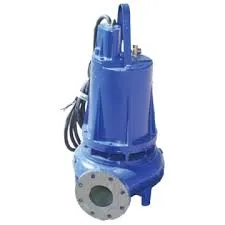Albanian
- Afrikaans
- Albanian
- Amharic
- Arabic
- Armenian
- Azerbaijani
- Basque
- Belarusian
- Bengali
- Bosnian
- Bulgarian
- Catalan
- Cebuano
- Corsican
- Croatian
- Czech
- Danish
- Dutch
- English
- Esperanto
- Estonian
- Finnish
- French
- Frisian
- Galician
- Georgian
- German
- Greek
- Gujarati
- Haitian Creole
- hausa
- hawaiian
- Hebrew
- Hindi
- Miao
- Hungarian
- Icelandic
- igbo
- Indonesian
- irish
- Italian
- Japanese
- Javanese
- Kannada
- kazakh
- Khmer
- Rwandese
- Korean
- Kurdish
- Kyrgyz
- Lao
- Latin
- Latvian
- Lithuanian
- Luxembourgish
- Macedonian
- Malgashi
- Malay
- Malayalam
- Maltese
- Maori
- Marathi
- Mongolian
- Myanmar
- Nepali
- Norwegian
- Norwegian
- Occitan
- Pashto
- Persian
- Polish
- Portuguese
- Punjabi
- Romanian
- Russian
- Samoan
- Scottish Gaelic
- Serbian
- Sesotho
- Shona
- Sindhi
- Sinhala
- Slovak
- Slovenian
- Somali
- Spanish
- Sundanese
- Swahili
- Swedish
- Tagalog
- Tajik
- Tamil
- Tatar
- Telugu
- Thai
- Turkish
- Turkmen
- Ukrainian
- Urdu
- Uighur
- Uzbek
- Vietnamese
- Welsh
- Bantu
- Yiddish
- Yoruba
- Zulu
Telephone: +86 13120555503
Email: frank@cypump.com
Dhj . 14, 2024 14:20 Back to list
pump pipeline system analysis and design
Pump Pipeline System Analysis and Design
In modern industrial applications, the importance of a well-designed pump pipeline system cannot be overstated. These systems are crucial for the efficient transport of liquids and slurries across various sectors, including municipal water supply, wastewater treatment, chemical processing, and oil and gas distribution. The design and analysis of pump pipeline systems involve a detailed understanding of fluid mechanics, pump performance, and system dynamics to ensure optimal operational efficiency.
Understanding Pump Systems
At its core, a pump pipeline system consists of pumps, piping networks, valves, and other ancillary components. Each of these elements plays a critical role in the overall performance of the system. The primary function of a pump is to move fluid from one location to another while overcoming resistance caused by friction in the pipes and elevation changes. Therefore, selecting the appropriate pump type and size is vital for achieving desired flow rates and pressures.
Analyzing System Requirements
The first step in designing an effective pump pipeline system is to evaluate the system requirements. This includes determining flow rates, the types of fluids being transported, system pressure requirements, and the total head that the pump must overcome. These parameters inform the selection of pump type—whether centrifugal, positive displacement, or submersible—and its specifications.
Equally important is the consideration of the piping layout. The design should minimize bends and transitions that could lead to pressure drops and increased energy consumption. Computational Fluid Dynamics (CFD) tools are commonly used in the analysis phase to model fluid flow and identify potential bottlenecks within the system.
Pump Selection and Energy Efficiency
Once the requirements are established, the next step is pump selection. The chosen pump must satisfy the required flow and head while operating within its peak efficiency range. Various performance curves, which illustrate the relationship between flow rate, head, and power consumption, are provided by manufacturers. Selecting pumps that operate efficiently under expected conditions can result in significant energy savings.
pump pipeline system analysis and design

Energy efficiency is increasingly becoming a focal point in pump system design due to changing regulations and rising energy costs. Incorporating variable frequency drives (VFDs) can prove beneficial, allowing pumps to operate at different speeds, thereby matching the flow requirements more closely and reducing energy consumption during low-demand periods.
Piping Design Considerations
In addition to pump selection, the design of the piping system involves several critical considerations. Pipe material must be chosen based on the chemical characteristics of the fluid, temperature, and pressure conditions. Common materials include stainless steel, PVC, and ductile iron, each with its trade-offs in terms of durability, cost, and suitability.
Furthermore, the diameter of the pipes must be selected carefully to balance between minimizing friction losses and maintaining flow velocity to prevent sedimentation in slurry systems. Hydraulically smooth surfaces will help reduce the friction factor, while proper pipe fittings and transitions must be designed to minimize additional turbulence.
Maintenance and System Longevity
A well-designed pump pipeline system not only needs to function effectively but also must be easy to maintain. Regular monitoring and maintenance strategies should be integrated into the design to extend the system's operational life. Implementing predictive maintenance technologies can help identify potential failures before they occur, avoiding costly downtimes.
Conclusion
In conclusion, the analysis and design of pump pipeline systems require a comprehensive approach that integrates fluid mechanics, pump selection, piping configuration, and maintenance strategies. By thoroughly understanding and addressing each component, engineers can create efficient, reliable, and cost-effective systems that meet the growing demands across various industries. As technology advances, continued innovation in pump and pipeline design will invariably lead to superior performance and sustainability in fluid transport processes.
-
ISG Series Vertical Pipeline Pump - Chi Yuan Pumps Co., LTD.|High Efficiency, Energy Saving, Low Noise
NewsJul.30,2025
-
ISG Series Vertical Pipeline Pump- Chi Yuan Pumps|High Efficiency&Low Noise
NewsJul.30,2025
-
ISG Series Vertical Pipeline Pump-Chi Yuan Pumps Co., LTD.|High Efficiency&Energy Conservation
NewsJul.30,2025
-
ISG Series Vertical Pipeline Pump - Chi Yuan Pumps Co., LTD.|Advanced Hydraulic Design&Energy-Efficient Solutions
NewsJul.30,2025
-
ISG Series Vertical Pipeline Pump - Chi Yuan Pumps Co., LTD.
NewsJul.30,2025
-
ISG Series Vertical Pipeline Pump - Chi Yuan Pumps Co., LTD.|energy-efficient fluid handling&industrial durability
NewsJul.30,2025










